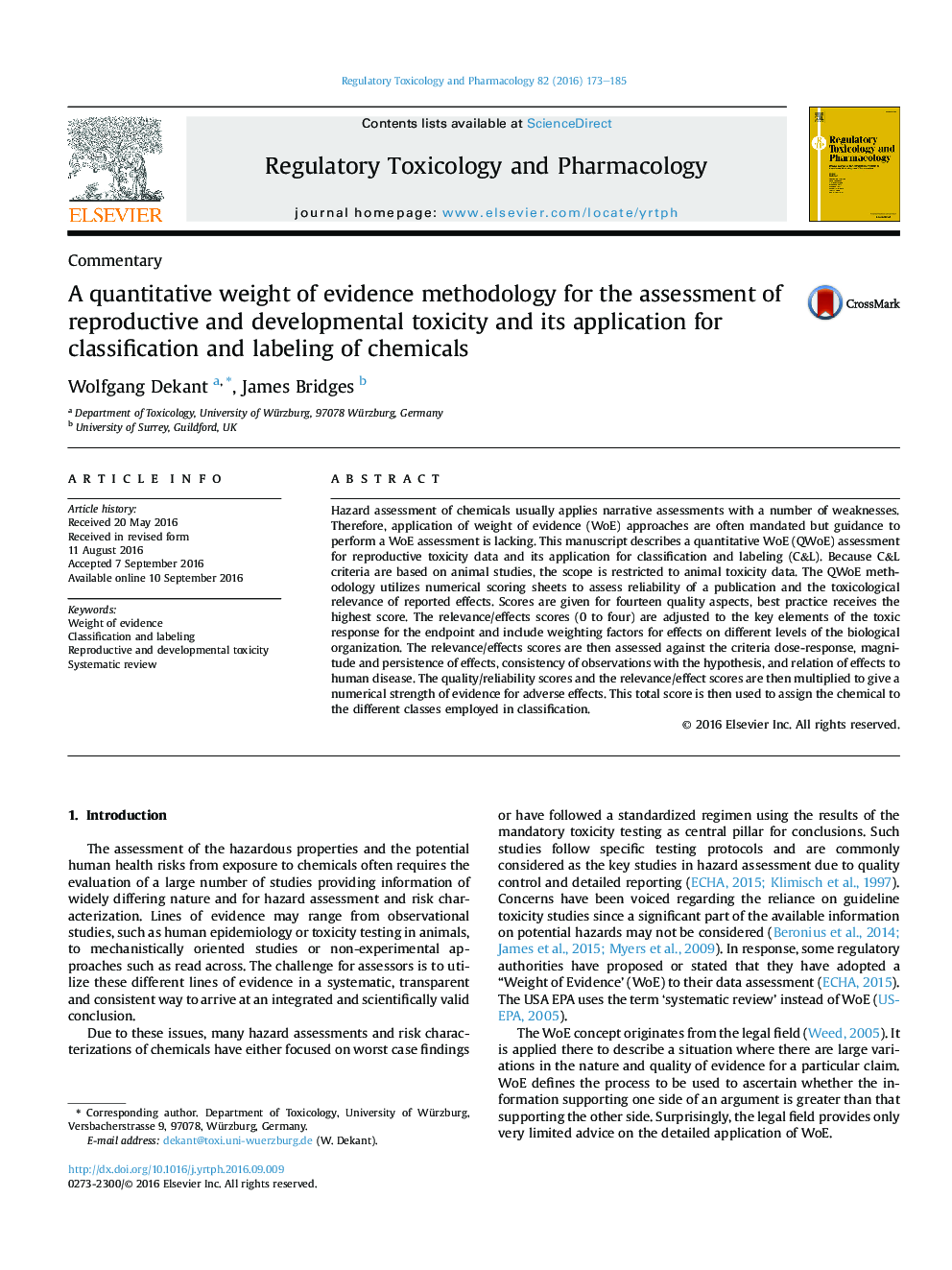| کد مقاله | کد نشریه | سال انتشار | مقاله انگلیسی | نسخه تمام متن |
|---|---|---|---|---|
| 5561296 | 1562121 | 2016 | 13 صفحه PDF | دانلود رایگان |
- Development of a quantitative weight of evidence (WoE) methodology.
- Detailed quality scoring of all relevant aspects of a publication.
- Quantitative assessment of effects based on biological relevance and adversity.
- Translation of derived level of evidence to support decisions on classification and labelling.
Hazard assessment of chemicals usually applies narrative assessments with a number of weaknesses. Therefore, application of weight of evidence (WoE) approaches are often mandated but guidance to perform a WoE assessment is lacking. This manuscript describes a quantitative WoE (QWoE) assessment for reproductive toxicity data and its application for classification and labeling (C&L). Because C&L criteria are based on animal studies, the scope is restricted to animal toxicity data. The QWoE methodology utilizes numerical scoring sheets to assess reliability of a publication and the toxicological relevance of reported effects. Scores are given for fourteen quality aspects, best practice receives the highest score. The relevance/effects scores (0 to four) are adjusted to the key elements of the toxic response for the endpoint and include weighting factors for effects on different levels of the biological organization. The relevance/effects scores are then assessed against the criteria dose-response, magnitude and persistence of effects, consistency of observations with the hypothesis, and relation of effects to human disease. The quality/reliability scores and the relevance/effect scores are then multiplied to give a numerical strength of evidence for adverse effects. This total score is then used to assign the chemical to the different classes employed in classification.
Journal: Regulatory Toxicology and Pharmacology - Volume 82, December 2016, Pages 173-185
